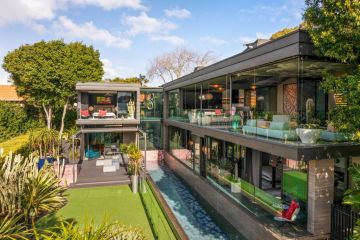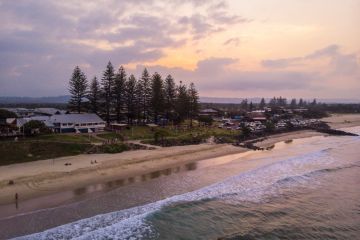Hands off Federation Square and four other Melbourne landmarks that need protection
The community outrage surrounding the illegal demolition of the 159 year old Corkman Pub was palpable. But buildings don’t need to be old in order to hold a special cultural significance to our famously liveable city. Here are five buildings and features that need protection.
 Not appropriate for a massive Apple shop: Federation Square.
Not appropriate for a massive Apple shop: Federation Square.
Federation Square
It seems unthinkable that any government would entertain the wholesale purchase and demolition of a significant building within Federation Square. Yet it was revealed recently that Apple is in the early stages of negotiating for a juicy piece of Melbourne’s cultural soul.
The Yarra Building on the south side of the square is perhaps the most visually energetic of the collection and plays a crucial role in Federation Square’s cohesion. It is also home to the Koorie Heritage Trust, an organisation committed to furthering our understanding into aboriginal culture in south-east Australia. Ordering the eviction of this organisation and then the demolition of the building is akin to cultural vandalism. Doing so at the request of multinational big business, in order to make a quick buck, is also unconscionable.
The sudden threat to a prominent landmark only 14 years into its existence draws into question the vulnerability of some of Melbourne’s other recent architectural treasures:
 Jeff’s Shed: the Melbourne Exhibition Centre. Photo: Matthew Piper
Jeff’s Shed: the Melbourne Exhibition Centre. Photo: Matthew Piper
Melbourne Exhibition Centre
Completed in 1996, perhaps few other building in Melbourne epitomise the 1990s the way the Melbourne Exhibition Centre does. Affectionately known as Jeff’s Shed, it was designed by the internationally acclaimed Melbourne practice Denton Corker Marshall. The architecture takes full advantage of the riverfront location, with the wall of glass ensuring visitors have a constant river outlook as they wander down the expansive lobby. The striking colourful forms and the graphical sensibility to the signage make for a memorable experience. This multipurpose space has contributed strongly to Melbourne’s reputation of hosting world class events and has played a critical part in the rejuvenation of Southbank.
 Trendsetting: the Republic Tower at the corner of Queen and Latrobe streets. Photo: Luis Enrique Ascui
Trendsetting: the Republic Tower at the corner of Queen and Latrobe streets. Photo: Luis Enrique Ascui
The Republic Tower
The most obvious change to Melbourne in the past 25 years has been the proliferation of high-rise towers in the CBD. Undoubtedly, there are some shockers but there are also exemplars. Fender Katsalidis Architects has long been leading the charge of quality high-rise design across the city. Although best known for Melbourne’s tallest building, Eureka Tower, it was the Republic Tower (on the corner of La Trobe and Queen streets) that really made the idea of apartment living in the CBD an appealing proposition. The dynamic concrete and glass facade give the tower immense personality, whilst the integration of an art space on the ground level makes this 1999 tower ahead of its time.
 Eyecatching: the Australian Centre for Contemporary Art. Photo: Martin Saunders
Eyecatching: the Australian Centre for Contemporary Art. Photo: Martin Saunders
Australian Centre for Contemporary Art
ACCA, by esteemed architects Wood Marsh, is a building-sized steel sculpture that tells the story of Melbourne’s changing understanding and attitudes towards contemporary art. Just 22 years earlier, the now infamous sculpture “The Vault”, by Robertson-Swann, was so controversial it was banished from its prominent City Square home. It was deemed too controversial and given the nickname ‘Yellow Peril’ as Melbourne struggled to come to terms with modern art. This piece is now the perfect companion to the ACCA’s geometric rusted steel skin. Unlike the rocky reception The Vault received, ACCA was immediately recognised for its significance – winning the award for Institutional architecture in the 2003 Victorian Institute of Architects awards.
 Welcome to Melbourne: the colloquially-known ‘cheese stick’. Photo: Justin McManus
Welcome to Melbourne: the colloquially-known ‘cheese stick’. Photo: Justin McManus
Melbourne Gateway
Melbourne’s original piece of freeway architecture is also evidence of a bold and audacious design confidence developing in the 1990s. Under recent threat of being undermined by the East West Link, this is another DCM landmark worthy of protection. The cheese stick is Melbourne’s international front door, and goes some way to making amends for the ordinary arrival sequence that visitors experience. The success of the gateway led to further experimentation into the place-making abilities of freeway architecture in Melbourne.
Michael Smith is a director of architectural practice Atelier Red+Black. He also writes the blog The Red+Black Architect.
We recommend
States
Capital Cities
Capital Cities - Rentals
Popular Areas
Allhomes
More







